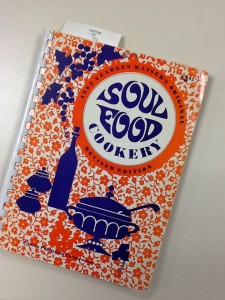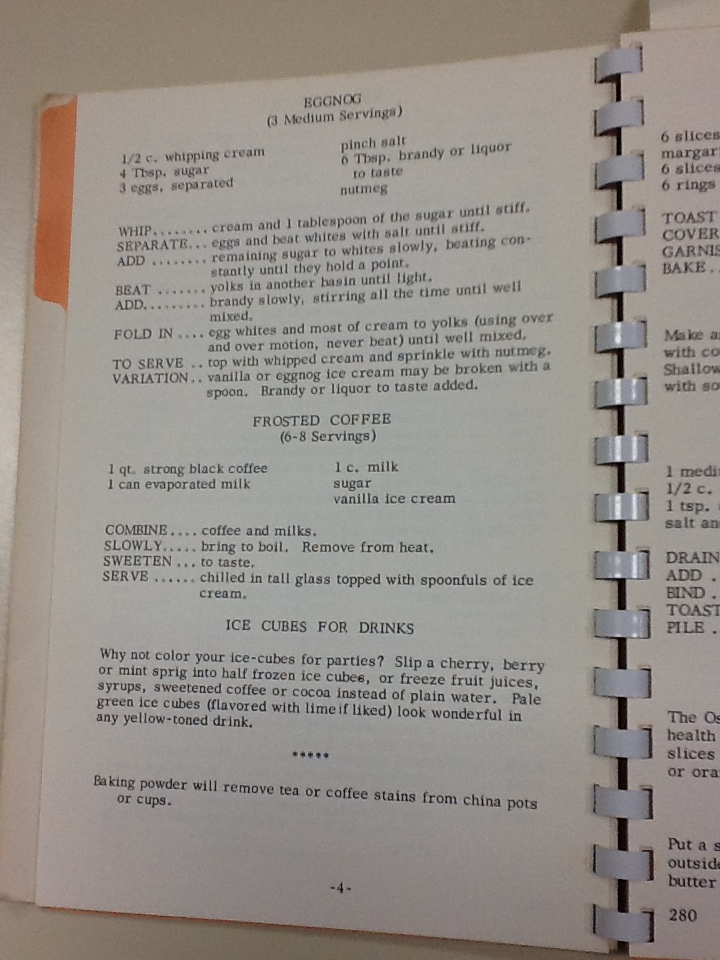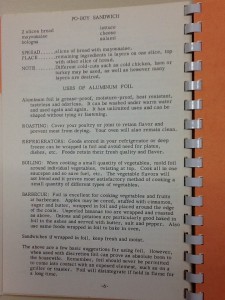By: Samm Banks, MA student in American Studies
Our pedagogy series is a way to highlight innovative teaching using primary sources housed in the Division of Special Collections. Read the first and second posts of this series if you haven’t already. On Thursday, we’ll hear from Laci Thompson.
Cookbooks are a valuable way not only to see inside various different cultures, but also to gain first-person insight to cultural movements in society. Though some cookbooks are widely produced and available at any bookstore, some are restricted to certain communities and groups who produce cookbook for the benefit of their own, unique communities. In these cases, the cheap materials used cause these cookbooks to be lost to time. In many cases, cookbooks are discarded and rarely recognized as a valuable window into communities and cultures through time.
In Soul Food Cookery, the author identifies her heritage as “Negro,” not out of derogation, but as an accepted term used to describe African Americans. This is similar to the LBGT community’s reclaiming of the word “queer” in that the community has taken a form of abuse, and transformed it into a sense of pride. As this cookbook was produced in the 1960’s, this is probably a direct result of Black Pride taking place in the U.S. at this time. The author defines “soul” as a cultural marker, an association with being a more satisfied person. Though this paints a picture of pride and progress, the realities of the cookbook’s contents reveal some of the norms of African American existence in the 1960’s.
There are no delicacies in this cookbook, leading one to believe that, in many cases, this would have been out of the assumed budgetary range of intended readers. Limited budget is also revealed in many of the ingredients, and the helpful notes throughout the book such as “Tips on Saving Money at the Food Store.” Commonly rejected materials are also used in some recipes, revealing the “waste not, want not” mindset of struggling families.
Certain recipes and suggestions lead readers to believe that the African American lower-middle class of the 60’s recognized their struggle, and the need to progress and integrate. Two such examples are the recipe for Fancy Ice Cubes and Table Setting Suggestions. In both cases, there is a desire to enjoy middle class life and entertain guests as a member of the working class.
Other notable features are the suggestions for the Uses of Aluminum Foil, and the section on T.V. Snacks. These features suggest the invention of these items now understood to be a staple of the American home. The dominance of television in American homes at this time was incontestable, and many mothers had to adapt their family’s daily routine to this new feature of the home. The Suggestions for Aluminum foil use again suggest budgeting struggles, but also the limits of technology at this time. While foil is described as reusable, the dangers of foil in the microwave are not mentioned, due to the lack of the invention at the time.
Many of these issues might be overlooked by contemporary readers. Now we understand many food products to be available due to mass production. We do not often think of the inequity in homes based on class. This cookbook, however, reveals to us just how far our society has come in such a small amount of time. It does, however, cause one to question what the bottom of the totem pole looks like today, as many populations may yet live under these circumstances.




